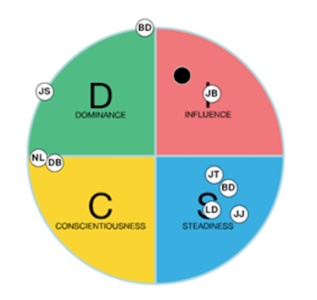Strategies & Differences of Using DiSC vs MBTI Profiles
 DiSC and MBTI are the most widely used assessments. We often are asked what the key differences are between DiSC and MBTI and if there is an advantage of using one over another. We find that the question is not ‘which assessment is better – either/or?’ but rather ‘how do each of these assessments provide value to team members and organizations?’. Both DiSC and MBTI provide insightful feedback and can actually complement one another.
DiSC and MBTI are the most widely used assessments. We often are asked what the key differences are between DiSC and MBTI and if there is an advantage of using one over another. We find that the question is not ‘which assessment is better – either/or?’ but rather ‘how do each of these assessments provide value to team members and organizations?’. Both DiSC and MBTI provide insightful feedback and can actually complement one another.
Both offer many advantages to individuals and organizations. Here is an overview that provides takeaways on key differences that distinguish each of the assessments.
DiSC focuses primarily on four dominant behavioral types. For example, an individual might score as a D style with priorities demonstrating a strong D. Or, a combined style of DC or Di demonstrates that in addition to the D style, the individual has elements of either C or i. Using a circular model, respondents are easily able to visually pinpoint where their style falls within the DiSC model.
Dominance: These are take-charge people, decisive, and determined. They are natural born leaders who seek immediate results by making decisions quickly and straightforward communications.
Influence: Friendly and enthusiastic, these individuals want to be in the action working with a team. They are great promoters and encourage collaboration.
Steadiness: People-oriented providing support and maintaining stability. Team members enjoy collaboration and strive for team harmony.
Conscientiousness: Prioritize quality and accuracy, maintaining stability, and challenge assumptions. Motivated by seeking opportunities to use expertise or gain knowledge.

MBTI scores individuals across 16 different types along 4 overall measures. For example, ENTP as one of the 16 types. There is not a model that easily distinguishes Types making it more challenging to retain the differences across the 16 Types.
(E) Extroversion / (I) Introversion: Extroverts focus on the outside world and are energized through interactions with people or doing things. Introverts focus on the inner world and gain energy through reflection on information, ideas, and concepts.
(S) Sensing / (N) Intuition: Sensing and Intuition scores how an individual takes in information. Individuals that fall into Sensing tend to notice and trust facts, details, and present realities. Those who score in the Intuition scale attend to and trust interrelationships, theories, and future possibilities.
(T) Thinking / (F) Feeling: Thinking and Feeling measures how an individual makes decisions or comes to a conclusion. Those that fall in Thinking make decisions using logical analysis to achieve objectivity. Individuals who fall into the Feeling scale make decision using person-centered values to achieve harmony.
(J) Judging / (P) Perceiving: Individuals in the Judging scale tend to be organized and orderly and to make decisions quickly. Those that fall in Perceiving tend to be flexibly and adaptable and to keep options open as long as possible.
MBTI provides an in-depth understanding of how people think internally. DiSC measures how personality translates to external behavior and the environment.
MBTI is useful for individuals with the goal of increasing self-knowledge. DiSC is specific to whatever environment you have in mind when taking the assessment – for example, in a work role.
DiSC is easy to retain over a long period of time. The circular model provides individualswith an easy to reference visual of where each team members DiSC style falls within the model in relation to other team members which is a helpful tool when working with teams.
MBTI Results tend to be very personal and typically reveal a great deal about an individual’s inner self.
DiSC is beneficial for self-understanding while providing a framework for understanding others and adjust how you relate to them. MBTI is also helpful in this regard. However, to effectively apply the MBTI model for two people, you would need to remember the right combination of 8 letters for both individuals and then attempt to figure out the implications on your relationship.
Companies that invest in communication profiles are able to increase the productivity of the workforce with increased team member engagement and collaboration that drives results.
Learn more about DiSC and MBTI Assessments at ProfileAssessments.com
